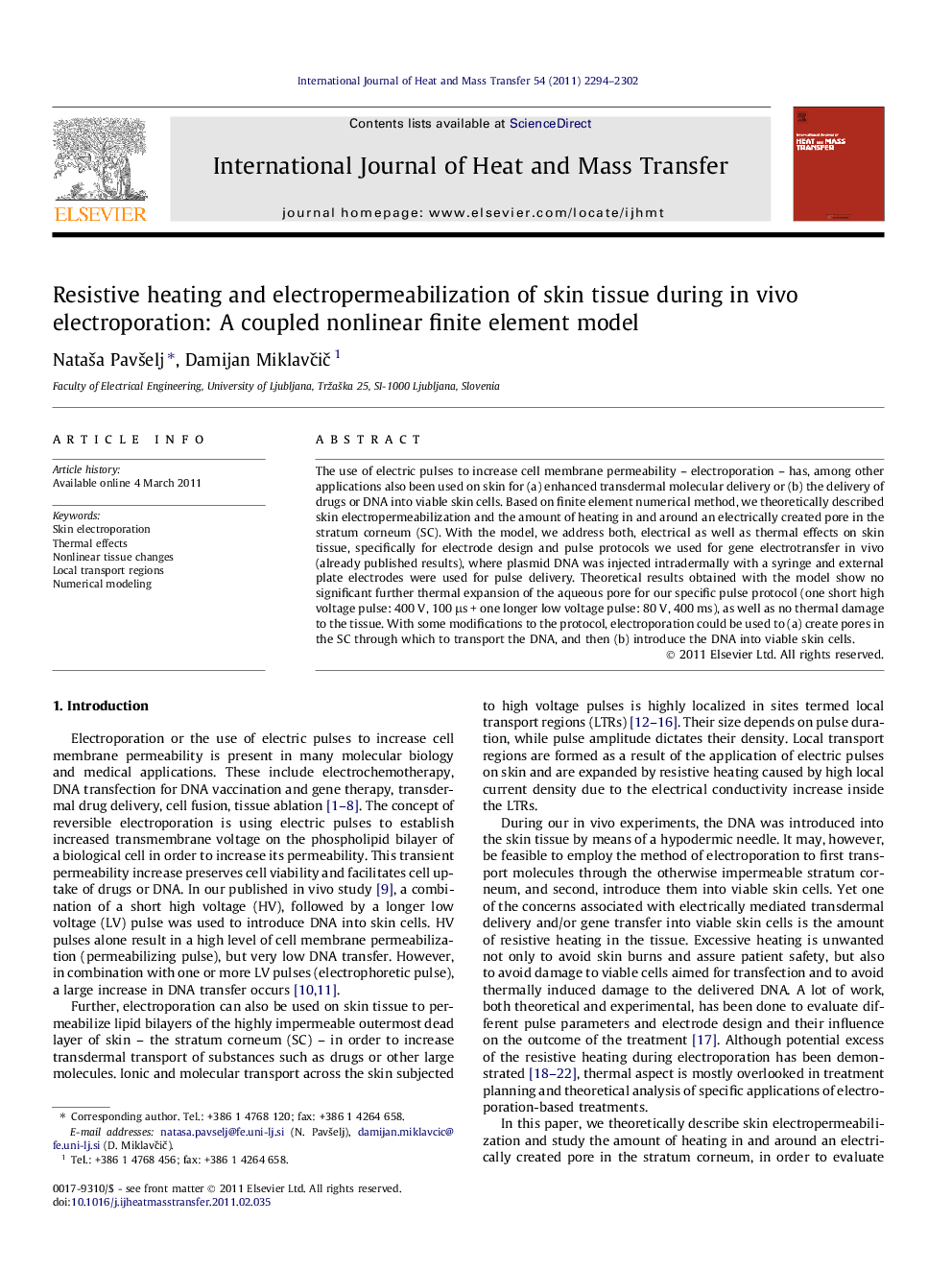| Article ID | Journal | Published Year | Pages | File Type |
|---|---|---|---|---|
| 659518 | International Journal of Heat and Mass Transfer | 2011 | 9 Pages |
Abstract
The use of electric pulses to increase cell membrane permeability - electroporation - has, among other applications also been used on skin for (a) enhanced transdermal molecular delivery or (b) the delivery of drugs or DNA into viable skin cells. Based on finite element numerical method, we theoretically described skin electropermeabilization and the amount of heating in and around an electrically created pore in the stratum corneum (SC). With the model, we address both, electrical as well as thermal effects on skin tissue, specifically for electrode design and pulse protocols we used for gene electrotransfer in vivo (already published results), where plasmid DNA was injected intradermally with a syringe and external plate electrodes were used for pulse delivery. Theoretical results obtained with the model show no significant further thermal expansion of the aqueous pore for our specific pulse protocol (one short high voltage pulse: 400 V, 100 μs + one longer low voltage pulse: 80 V, 400 ms), as well as no thermal damage to the tissue. With some modifications to the protocol, electroporation could be used to (a) create pores in the SC through which to transport the DNA, and then (b) introduce the DNA into viable skin cells.
Related Topics
Physical Sciences and Engineering
Chemical Engineering
Fluid Flow and Transfer Processes
Authors
NataÅ¡a PavÅ¡elj, Damijan MiklavÄiÄ,
